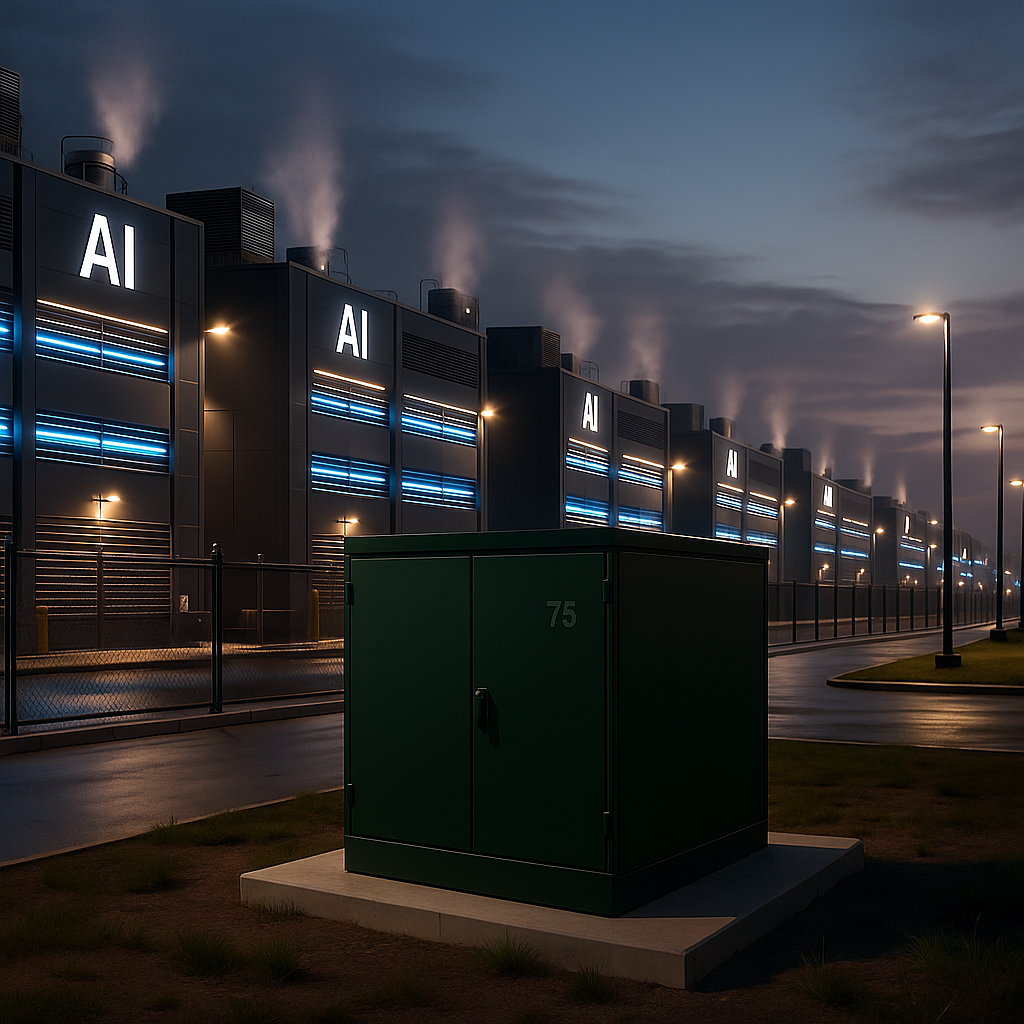The rise of Artificial Intelligence (AI) has revolutionized industries — from healthcare and logistics to finance and entertainment. Yet, behind every AI innovation lies a growing infrastructure challenge: energy demand.
Across the United States, data centers powering AI training models and cloud services are driving record levels of electricity consumption. This surge presents new technical and environmental pressures for the power grid, particularly for transformers that must adapt to an entirely new scale of demand.
Why Circular Economy Matters for Power Transformers
Over the past decade, data centers have become the backbone of the digital economy. But today’s AI-driven facilities consume far more energy than traditional ones.
A single large-scale AI training cluster can draw dozens of megawatts of power — comparable to the energy use of a small city.
Transformers are at the heart of this energy flow. They must manage:
- Constant, high load levels without overheating.
- Voltage fluctuations from irregular AI workloads.
- Round-the-clock operation, 24 hours a day, 365 days a year.
These conditions demand next-generation transformer technology capable of sustaining high efficiency and durability under extreme electrical stress.
- Keyword placement idea: Use “AI data centers,” “energy demand,” and “power transformers” in this section’s first 100 words for strong SEO indexing.
What Circular Economy Means for Transformers
As AI adoption accelerates, the U.S. grid is struggling to keep pace with demand.
Regions like Texas, Virginia, and Arizona — now hot spots for data center development — are experiencing grid congestion, transformer shortages, and power reliability issues.
Main Challenges Facing the Power Grid
- Production delays: Long lead times for transformer manufacturing are slowing expansion projects.
- Load imbalance: Clusters of energy-intensive facilities strain regional grids unevenly.
- Cooling requirements: High ambient temperatures and electrical density increase the risk of transformer overheating.
- Sustainability pressures: Operators must balance performance with carbon reduction targets.
Keyword placement idea: Include phrases like “grid modernization,” “energy infrastructure challenges,” and “data center electricity use.”
Technical Assessment for Second-Life Equipment
Meeting the power demands of the AI era requires innovation at every level of grid equipment.
Manufacturers and utilities are implementing advanced technologies to improve efficiency, reliability, and sustainability.
Key Technological Advances
- Amorphous metal cores reduce energy losses and improve thermal performance.
- Ester-based cooling systems offer safer, eco-friendly alternatives to traditional oil-filled units.
- Digital monitoring sensors enable predictive maintenance and early fault detection.
- Modular transformer designs simplify replacement and reduce downtime during peak demand.
These upgrades not only enhance operational stability but also extend the lifespan of critical grid components — making them essential for large-scale AI data facilities.
Keyword placement idea: Use “smart transformers,” “high-efficiency cores,” and “AI infrastructure” within this section.

Collaboration Is Key to Sustainable Power Expansion
AI companies, data center developers, and utilities must work together to balance rapid growth with long-term sustainability.
Partnerships between tech giants (such as NVIDIA, Google, and Microsoft) and energy providers are already shaping the next generation of infrastructure — one that emphasizes renewable integration, load balancing, and predictive analytics.
These collaborations not only ensure sufficient power supply but also foster innovation across the transformer and grid technology sectors.
Looking Ahead: AI as Both the Challenge and the Solution
While AI is increasing power demand, it’s also offering tools to optimize grid management.
Advanced algorithms can:
- Predict load spikes before they occur.
- Improve transformer performance under variable demand.
- Support real-time decision-making to prevent outages.
This integration of AI into power systems marks the beginning of a self-optimizing energy ecosystem — one that learns, adapts, and strengthens the grid’s resilience.
Conclusion
The future of power lies at the intersection of AI and energy infrastructure.
As data centers continue to expand, transformers will play a vital role in ensuring grid stability and efficiency.
By investing in modern transformer technology and smart collaboration, the energy sector can meet the demands of tomorrow’s digital world — sustainably and securely.
Contact our team today to discuss custom energy solutions that power your AI-driven operations.
At United TRS Electric, we believe true power lies in energy’s ability to transform, renew, and keep creating value.

